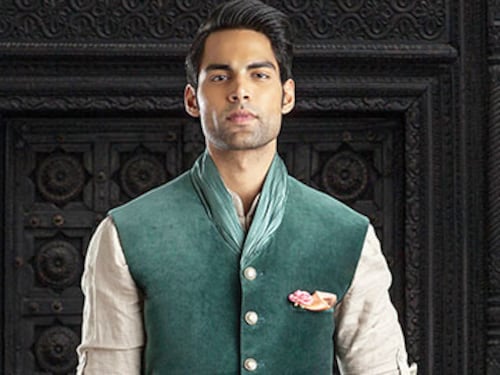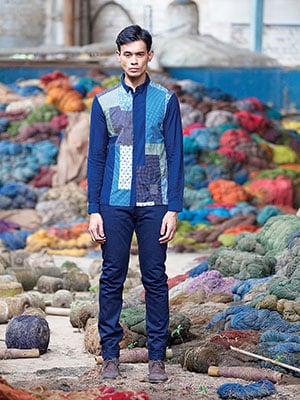Why men must shop smart
Making a sale to a man is more painless


In the retail business, there is a well-known diktat: go after the male customer. Targets may be met by chasing the female of the species, but sales invariably are the result of much hemming and hawing. And, frankly, who has the time for that when you can wait on a man who walks in with a list and buys two of everything. Simply by swiping his credit card. The truth is that even though the business hinges on women, making a sale to a man is more painless. This ease of trade stems from two simple facts. The first is that when men look in the mirror, their eye only focuses on their positives. So much so that when they look at their shoulders, they see them as broader and beefier than they actually are. Women, on the other hand, insist that even an accessory like a handbag or a shoe can make them look fat. Who do you think will be easier to please?
The other reason is that the male wardrobe is rather straightforward. I mean, what decision-making process goes into choosing a shirt and a trouser? Hit the repeat button eight days a week, and what do you know—an entire year has gone by without any angst. And this is why Indian men aren’t as well-dressed as, say, their European counterparts. The thought that clothes are just inanimate objects is wrong. Or that all fits fit well… seriously? That is like assuming that a sports shoe in any size will do the job or, worse, that you can use your tennis shoes for football or trail walking. Lesson one for men when it comes to dressing then goes like this: Things are not always as they seem.
For example, an off-the-rack shirt bought even from a brand reputed for its straight arrow reputation will never fit as well as a bespoke shirt. And no, high street will never have the polish of designer wear.
How do I know this? I saw this first hand. My introduction to fashion was done by ELLE India’s former fashion director Mohan Neelakantan. Not just through his wonderfully styled features for the magazine—I still say that he is the only person who understands that clothes must engage with culture and community to be relevant—but also from his personal experience. He was flamboyant, but he also understood cut and cloth. He never left the office in the same clothes. But he didn’t change—he just altered the existing look. Sometimes he simply ripped the sleeves off his shirt. Other times, he used a pink feathered boa and wore a neon green wig, but those are just things that happen in a fashion magazine. And must not be tried at home by those who are not professionals.
The other person I hold in greatest respect is designer Rajesh Pratap Singh. A man for all seasons, his famous pintucks are perhaps the finest design statement I have come across. With the greatest finesse, he uses this detailing on everything from shirts to kurtas and even on his women’s line. The Peshawari kurta—a modern-day take on a traditional Indian garment—is the one thing you must have in your wardrobe. It covers a multitude of sins and looks equally good in the day as it does at night. His ultra-slim pants, including his Jodhpurs, are a lesson in fine tailoring. And just when you think he can’t get better, he comes up with Indigo khadi jeans. His latest collection—shown at Wills Lifestyle India Fashion Week Spring Summer 2015—revealed again that he is the master of craft and aesthetic. Once you own a Pratap, trust me, there is no going back.
If the classic Bandhgala with Jodhpurs is your thing, then your search ends with Raghavendra Rathore. Not inexpensive, but my advice is that since this is a long-term buy, make the right investment. Similarly go for bespoke when you are getting a suit. Book an appointment with Narendra Kumar.
His fabric and cuts are amazing and his master tailor is second to none. If you want a slice of Savile Row, head to Tarun Tahiliani. He has been signed on by Whitcomb & Shaftesbury to design for the label. And while you are there, take the time to order one of “TT’s” bundis (a sleeveless waistcoat with a Mandarin collar, seen these days on a very important man). Add the names Rohit Bal and Arjun Khanna to your wardrobe edit—you will thank me for these recommendations.
Before I am accused of breaking the bank, there is another version of bespoke. The local tailor. South Mumbai’s best kept secret is Michele (pronounced Mikhail) Boutique in Colaba. Bang opposite the iconic Indigo restaurant, this glass-fronted store features in every well-heeled banker’s address book.
The owner speaks many languages just as he also stocks every fabric. Linen, wool, cotton. His made-to-measure shirts are a class apart. What gives it extra distinction is that he can have them ready and at your doorstep within eight hours. Do other cities have a similar “setting”? I am sure they do, but why bother finding out when Michele delivers all over India.
The ‘made in India’ tag has never been smarter. The writer was editor-in-chief of ELLE India for 13 years (till Dec 2012), a role in which she influenced fashion and lifestyle
First Published: Dec 02, 2014, 06:03
Subscribe Now(This story appears in the Mar 19, 2010 issue of Forbes India. To visit our Archives, Click here.)
